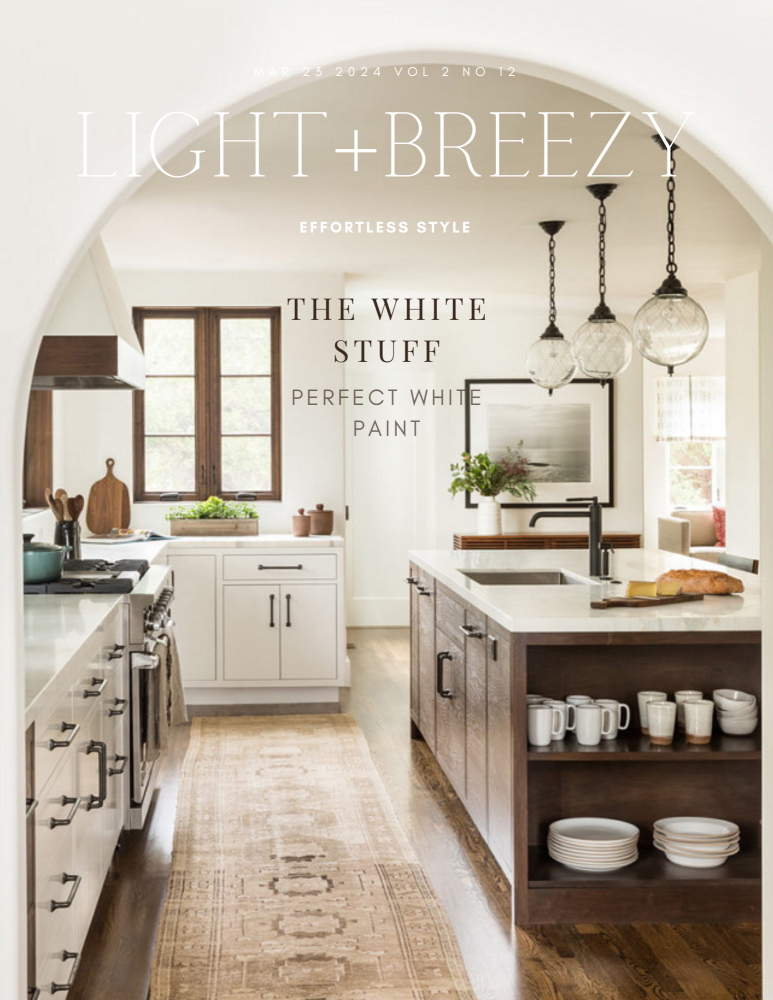The White Stuff
Perfect White Paint
This week’s issue idea came about because we will be selling our home sometime in the next couple of years. And as much as I love, love, love color, I do understand that others don’t decorate with color as I do. Further, it looks like the target buyer for our home is going to be a younger demographic whose preferences tend towards lighter, more streamlined decor.
There are a few walls which will need to be painted, and white seems to be the preferred color of this demographic. Investigating the right white for my home led me to a few conclusions. First, there are so many whites that one can become overwhelmed with the options. Secondly, whites tend to categorize themselves into warm, cool and neutral. That’s really all I needed to know to start narrowing down my choice to one white.
This article showcases five different whites and why they are perfect for certain situations. I don’t need any more options than these five and I hope you will discover why they are also the most favored by designers.
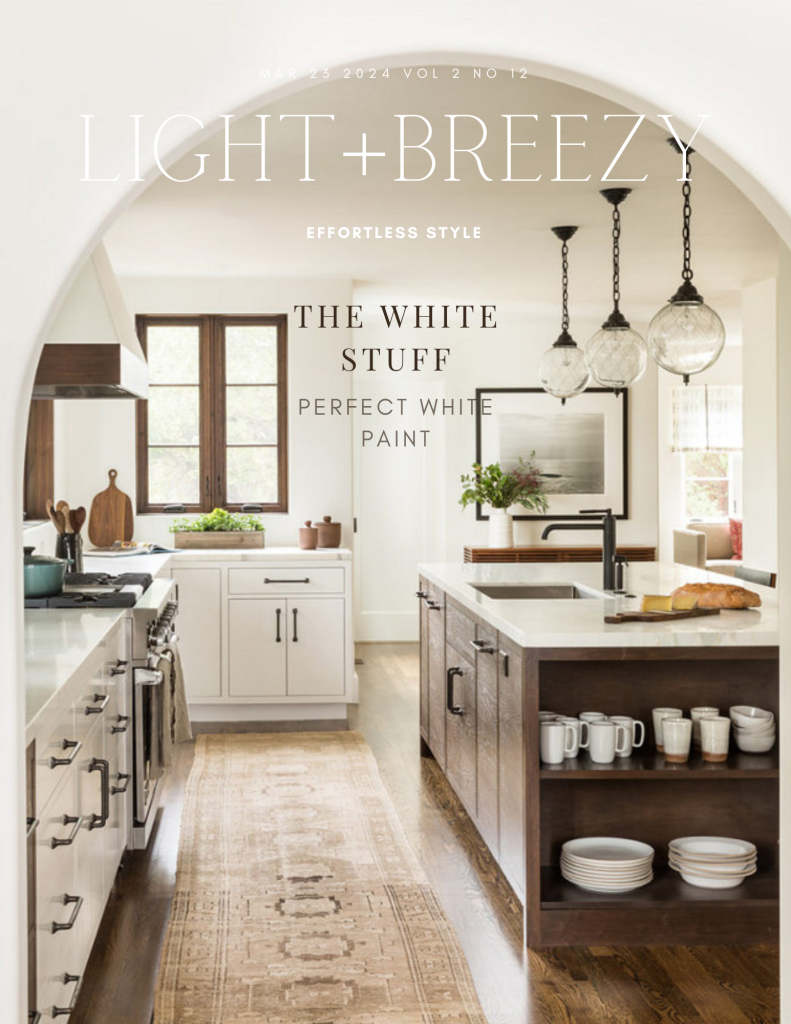


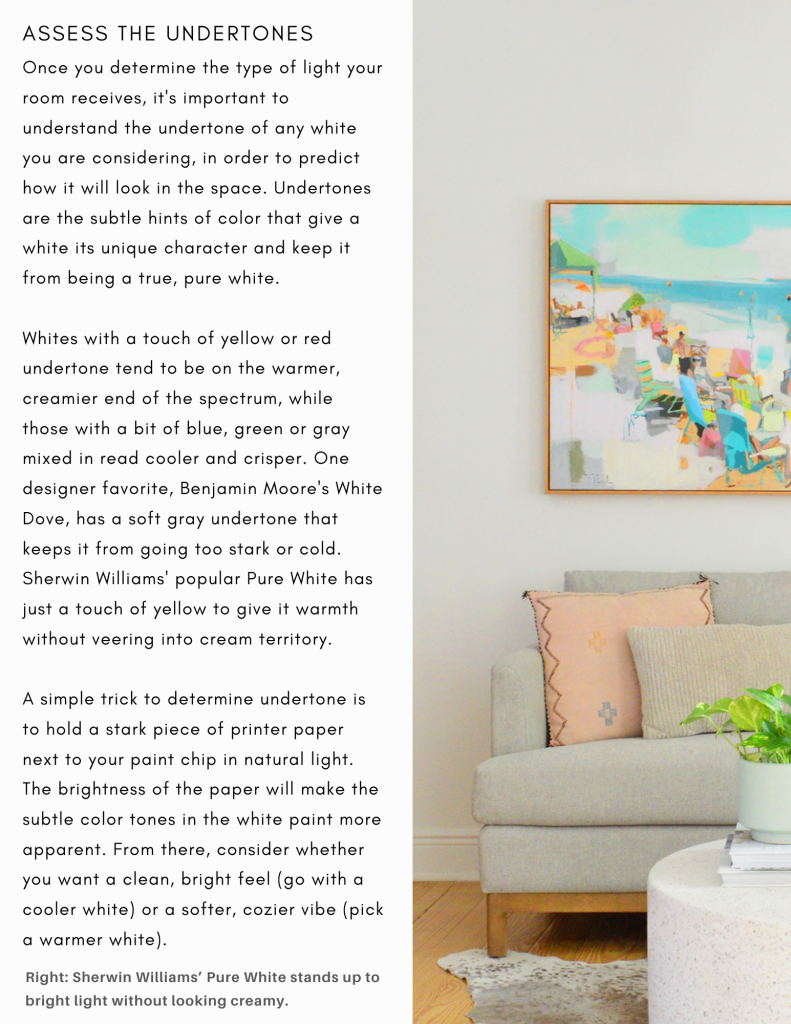
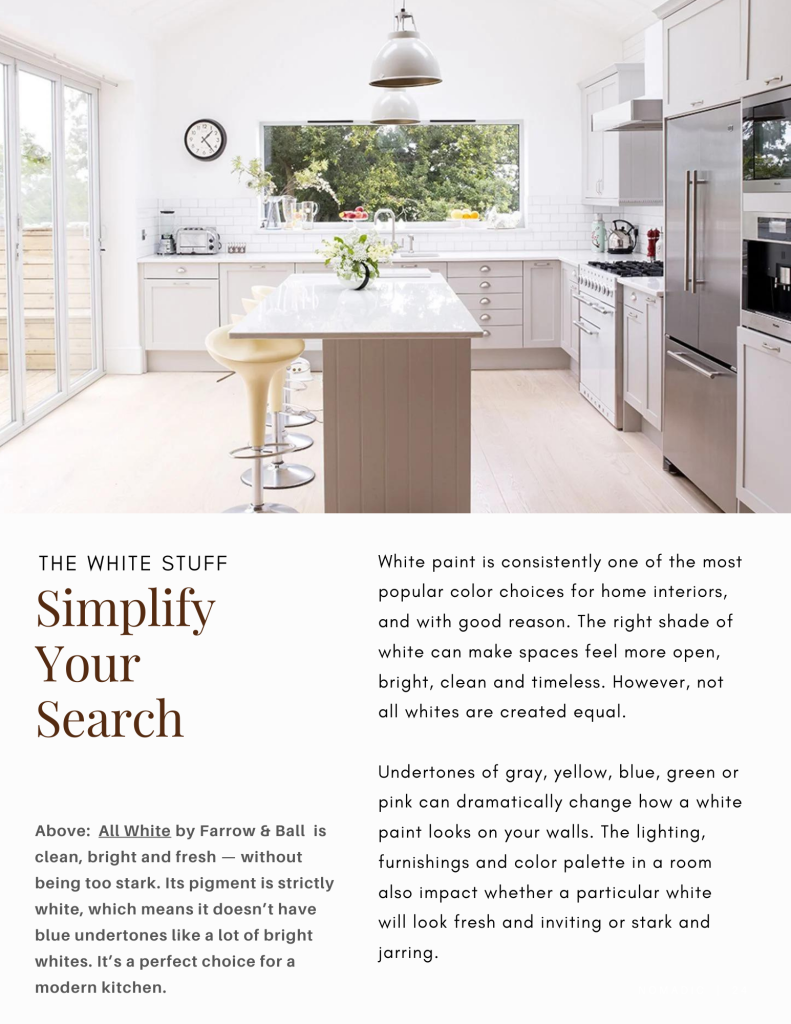
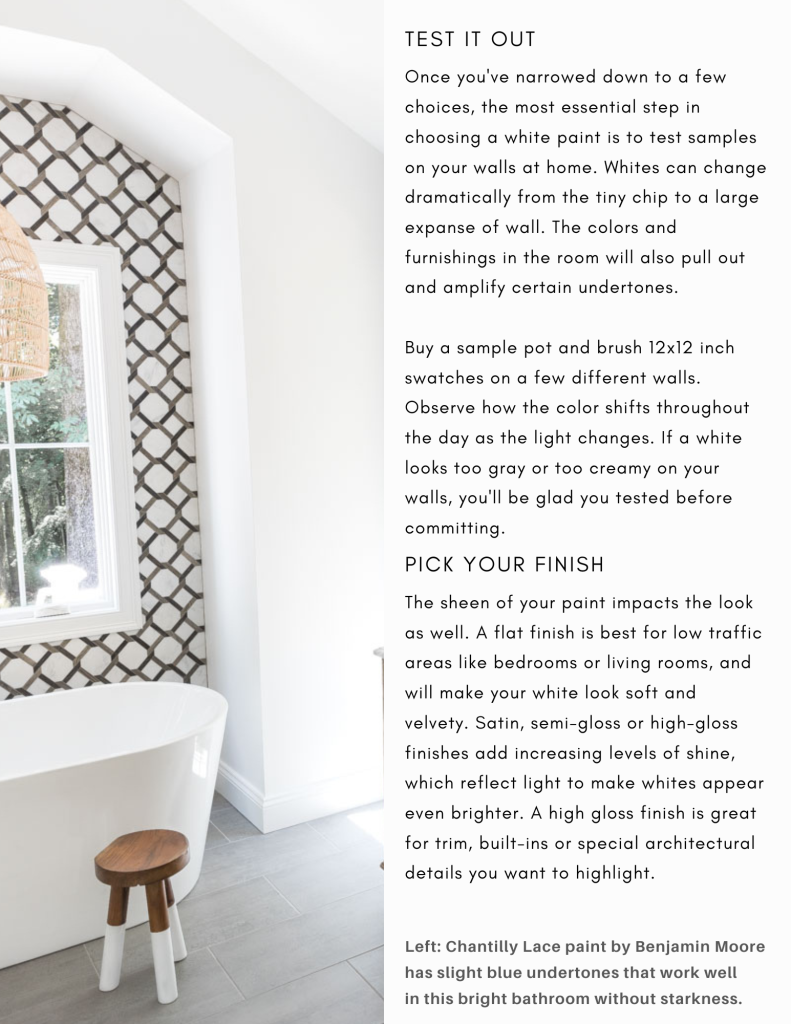
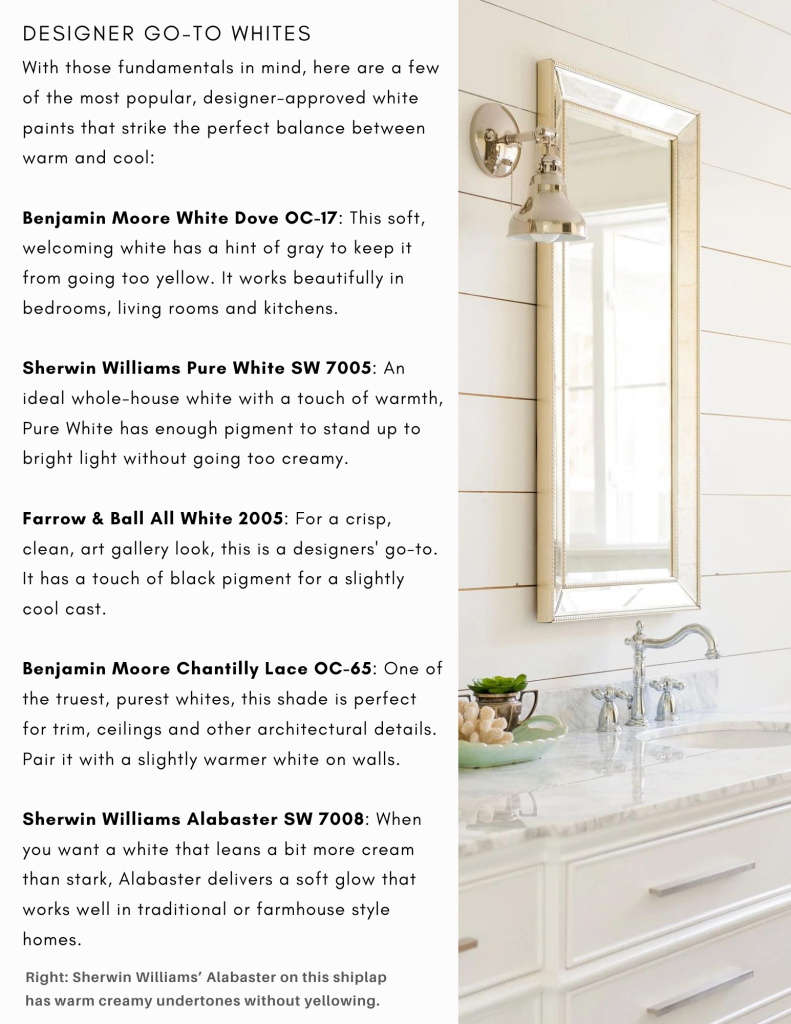
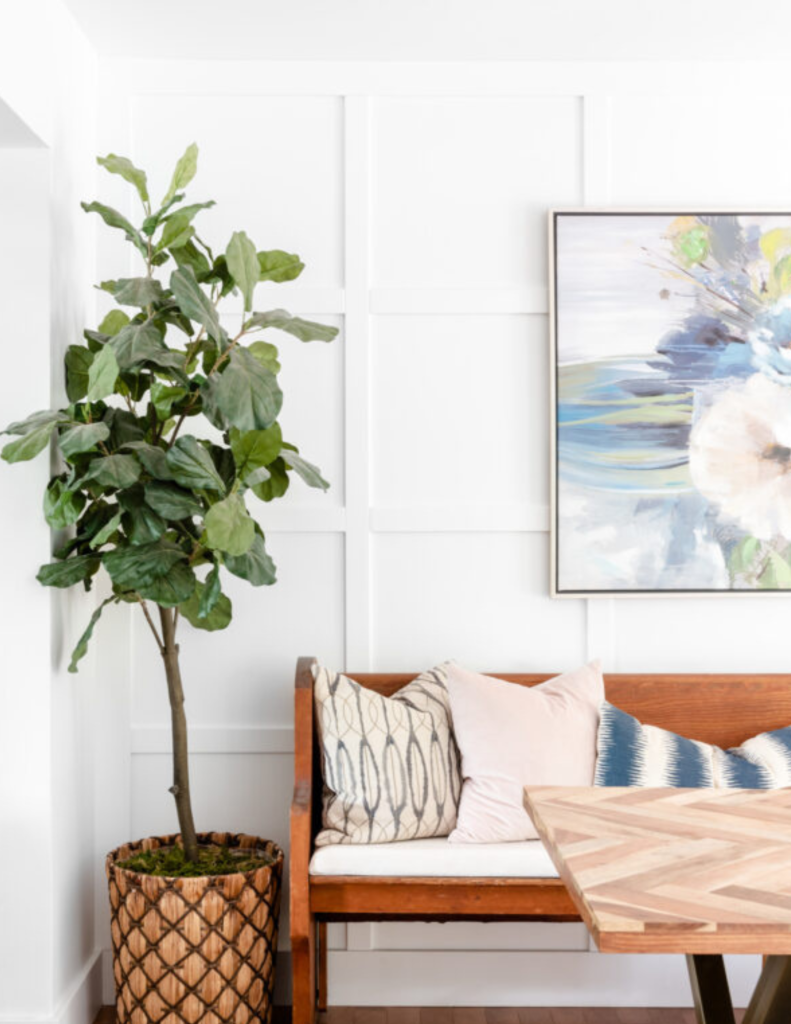
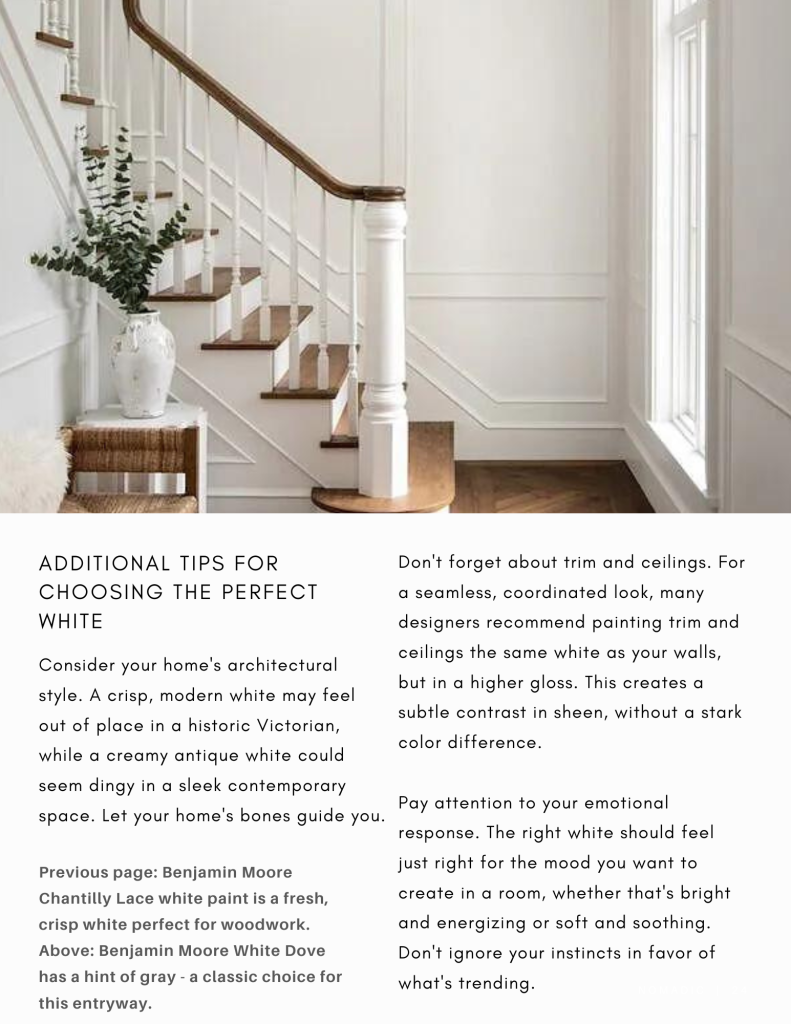
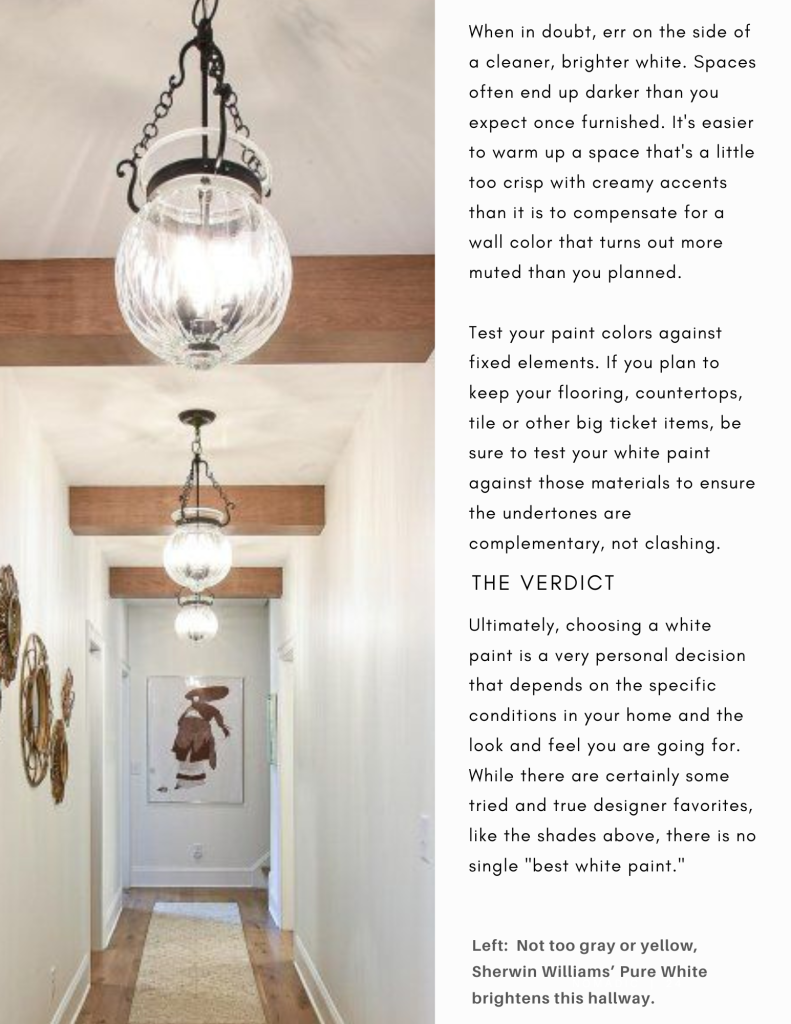
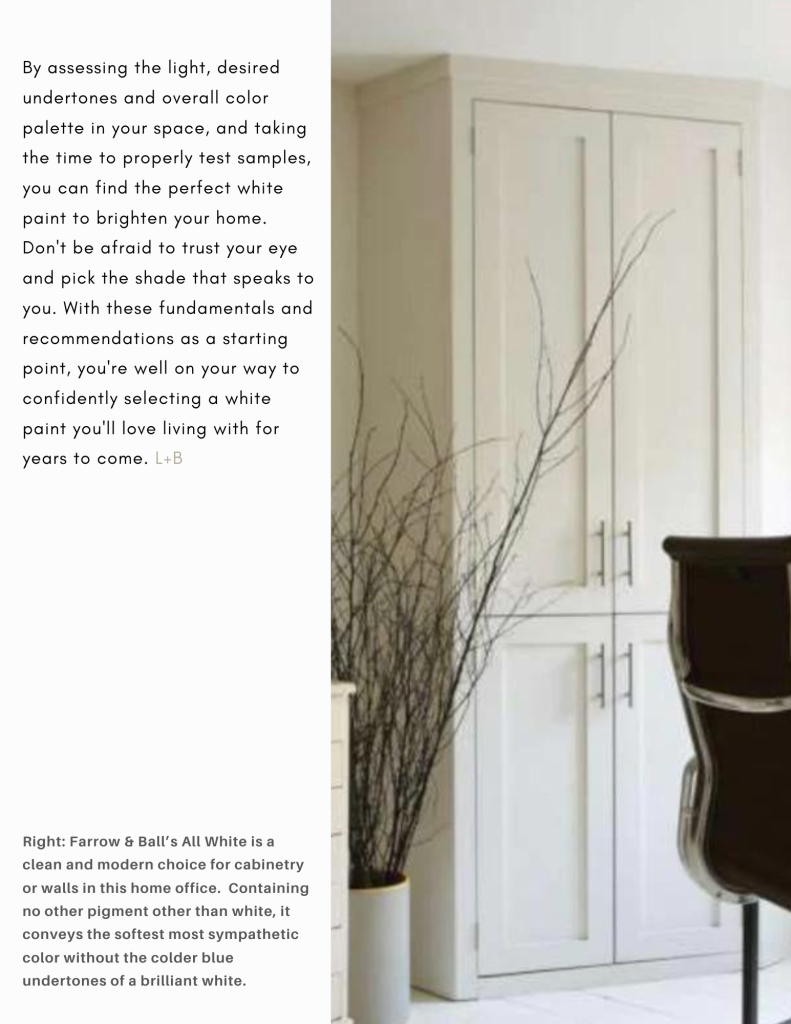

The White Stuff
Our designer-approved guide to choosing the perfect white paint
Many homeowners dream of brightening their spaces with fresh white walls, but are quickly overwhelmed by the dozens of different shades of white paint available. Selecting the right white is trickier than you might think. Choose the wrong tone and your space can end up looking sterile and cold or dingyand yellowed, instead of crisp and welcoming. To help simplify your search, we’ve consulted with top designers and paint experts to create thiscomprehensive guide with everything you need to confidently choose the perfect white paint for your home.
White paint is consistently one of the most popular color choices for home interiors, and with good reason. The right shade of white can make space feel more open, bright, clean and timeless. However, not all whites are created equal. Undertones of gray, yellow, blue, green or pink can dramatically change how a white paint looks on your walls. The lighting, furnishings and color palette in a room also impact whether a particular white will look fresh and inviting or stark and jarring.
So how do you go about finding your perfect shade of white without wasting time and money on trial and error? Start by understanding the fundamentals that affect how a white paint will look in your space:
Consider the Light
One of the biggest factors in how a paint color will read on your walls is the amount and type of light the room receives. In north-facing rooms withcooler, less direct light, a bright cool white can end up looking dull and shadowy, so opt for a warmer, creamier shade to balance the lack of natural warmth. In a south-facing room that gets an abundance of warm yellow light all day, a warm white may look too yellow, so a cooler, crisper white is a better choice to temper the sunny glow.
For rooms with less natural light like hallways, stairwells or powder rooms, go with a pure, clean white with a high LRV (light reflectance value) tohelp bounce the limited light around. In well-lit, open concept spaces, a white with a touch of gray or beige undertone can keep expanses of white wallsfrom feeling too stark or blindingly bright.
Assess the Undertones
Once you determine the type of light your room receives, it’s important to understand the undertone of any white you are considering, in order topredict how it will look in the space. Undertones are the subtle hints of color that give a white its unique character and keep it from being a true,pure white.
Whites with a touch of yellow or red undertone tend to be on the warmer, creamier end of the spectrum, while those with a bit of blue, green or graymixed in read cooler and crisper. One designer favorite, Benjamin Moore’s White Dove, has a soft gray undertone that keeps it from going too stark orcold. Sherwin Williams’ popular Pure White has just a touch of yellow to give it warmth without veering into cream territory.
A simple trick to determine undertone is to hold a stark piece of printer paper next to your paint chip in natural light. The brightness of the paperwill make the subtle color tones in the white paint more apparent. From there, consider whether you want a clean, bright feel (go with a cooler white)or a softer, cozier vibe (pick a warmer white).
Test It Out
Even once you’ve narrowed down to a few choices, the most essential step in choosing a white paint is to test samples on your walls at home. Whites can change dramatically from the tiny chip to a large expanse of wall. The colors and furnishings in the room will also pull out and amplify certain undertones.
Buy a sample pot and brush 12×12 inch swatches on a few different walls. Observe how the color shifts throughout the day as the light changes. If awhite looks too gray or too creamy on your walls, you’ll be glad you tested before committing.
Pick Your Finish
The sheen of your paint impacts the look as well. A flat finish is best for low traffic areas like bedrooms or living rooms, and will make your whitelook soft and velvety. Satin, semi-gloss or high-gloss finishes add increasing levels of shine, which reflect light to make whites appear even brighter.
A high gloss finish is great for trim, built-ins or special architectural details you want to highlight.
Designer Go-To Whites
With those fundamentals in mind, here are a few of the most popular, designer-approved white paints that strike the perfect balance between warm and cool:
Benjamin Moore White Dove OC-17: This soft, welcoming white has a hint of gray to keep it from going too yellow. It works beautifully in bedrooms,living rooms and kitchens.
Sherwin Williams Pure White SW 7005: An ideal whole-house white with a touch of warmth, Pure White has enough pigment to stand up to bright light without going too creamy.
Farrow & Ball All White 2005: For a crisp, clean, art gallery look, this is a designers’ go-to. It has a touch of black pigment for a slightly cool cast.
Benjamin Moore Chantilly Lace OC-65: One of the truest, purest whites, this shade is perfect for trim, ceilings and other architectural details. Pair it with a slightly warmer white on walls.
Sherwin Williams Alabaster SW 7008: When you want a white that leans a bit more cream than stark, Alabaster delivers a soft glow that works well in traditional or farmhouse style homes.
Additional Tips for Choosing the Perfect White
Consider your home’s architectural style. A crisp, modern white may feel out of place in a historic Victorian, while a creamy antique white could seem dingy in a sleek contemporary space. Let your home’s bones guide you.
Don’t forget about trim and ceilings. For a seamless, coordinated look, many designers recommend painting trim and ceilings the same white as your walls, but in a higher gloss. This creates a subtle contrast in sheen, without a stark color difference.
Pay attention to your emotional response. The right white should feel just right for the mood you want to create in a room, whether that’s bright and energizing or soft and soothing. Don’t ignore your instincts in favor of what’s trending.
When in doubt, err on the side of a cleaner, brighter white. Spaces often end up darker than you expect once furnished. It’s easier to warm up a space that’s a little too crisp with creamy accents than it is to compensate for a wall color that turns out more muted than you planned.
Test your paint colors against fixed elements. If you plan to keep your flooring, countertops, tile or other big ticket items, be sure to test your white paint against those materials to ensure the undertones are complementary, not clashing.
The Verdict
Ultimately, choosing a white paint is a very personal decision that depends on the specific conditions in your home and the look and feel you are going for. While there are certainly some tried and true designer favorites, like the shades above, there is no single “best white paint.”
By assessing the light, desired undertones and overall color palette in your space, and taking the time to properly test samples, you can find theperfect white paint to brighten your home. Don’t be afraid to trust your eye and pick the shade that speaks to you. With these fundamentals andrecommendations as a starting point, you’re well on your way to confidently selecting a white paint you’ll love living with for years to come.

